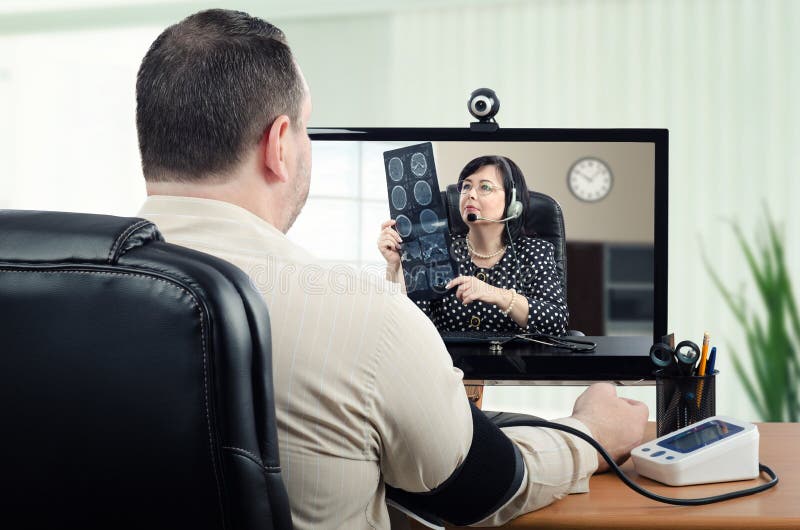Teledoctors: Bridging the Gap Between Patients and Doctor
The introduction of teledoctors represents a considerable change in the medical care landscape, supplying services to long-lasting access problems dealt with by carriers and individuals alike. By integrating telemedicine into typical methods, health care systems can get to remote and underserved populations, offering vital medical consultations without the obstacles of distance and traveling.
Rise of Telemedicine

The increase of telemedicine is likewise fueled by the need for economical medical care. Healthcare systems globally are under pressure to lower costs while keeping top quality care, and telemedicine provides a feasible remedy. By reducing the demand for physical check outs, telemedicine lowers overhanging prices for healthcare centers and ultimately decreases the economic worry on clients.
Additionally, the COVID-19 pandemic worked as a driver, accelerating the adoption of telemedicine techniques. Social distancing procedures and the need to minimize direct exposure danger required a change in the direction of remote appointments, triggering regulative bodies to adjust and support telehealth services. This shift has not only tried and tested telemedicine's efficiency yet also its possible to develop as a staple element of contemporary medical care systems.
Advantages for Patients
As telemedicine proceeds to reshape health care delivery, people stand to acquire considerably from this improvement. Largely, telemedicine improves availability, allowing people in underserved or remote areas to seek advice from medical care suppliers without the demand for extensive traveling. This is specifically helpful for people with wheelchair issues or those residing in rural areas where medical care centers might be limited. Telemedicine likewise provides individuals the convenience of getting clinical recommendations and treatment from the comfort of their homes, decreasing the time and price related to traveling to a health care facility.
Furthermore, telemedicine sustains connection of care by promoting normal follow-ups and monitoring, which are crucial for handling persistent conditions. Patients can conveniently arrange appointments and gain access to health care solutions outside conventional office hours, suiting their busy way of livings. This versatility results in enhanced person engagement and adherence to treatment strategies, possibly resulting in better health and wellness end results.
Furthermore, telemedicine can help minimize the danger of infection transmission, an issue enhanced by the COVID-19 pandemic. By lessening the requirement for in-person check outs, individuals can stay clear of jampacked waiting rooms and reduce exposure to contagious diseases. Ultimately, telemedicine empowers patients by offering timely, effective, and personalized healthcare solutions.
Benefits for Providers
For health care suppliers, telemedicine supplies substantial benefits that enhance the efficiency and reach of their practice. By leveraging electronic innovation, providers can extend their solutions to a broader market, including those in remote or underserved areas. This not only reduces geographical barriers yet also optimizes client retention and procurement by making health care extra accessible.
With telemedicine, the need for physical space diminishes, permitting service providers to conserve on actual estate and operational costs. This adaptability can lead to increased client examinations per day, thus increasing profits potential.
Telemedicine also promotes a more collective setting for doctor. teledoctors. It allows seamless sharing of patient info amongst specialists, boosting analysis precision and treatment outcomes. Additionally, electronic systems can incorporate with digital health and wellness records (EHRs), enhancing data precision and enhancing management jobs
Furthermore, telemedicine enhances patient complete satisfaction, which is crucial for provider online reputation and success. By providing prompt and convenient treatment, carriers can improve person loyalty and interaction, further reinforcing the provider-patient relationship.
Overcoming Challenges
While telemedicine uses various benefits for medical care carriers, it additionally offers obstacles that need mindful consideration. Medical care providers need to adhere to rigorous laws like HIPAA to shield sensitive info, thereby requiring investment in protected systems and continuous personnel training. teledoctors.
An additional challenge is the digital divide, which can prevent access to telemedicine solutions. Not all people have equal access to the required innovation or web connection, specifically those in underserved or rural areas. This variation can aggravate existing healthcare inequalities, making it critical for service providers to explore alternative services, such as collaborations with area companies, to connect this gap.
Moreover, there are limitations in conducting physical exams from another location. Certain conditions need in-person assessment, highlighting the need for a crossbreed design that integrates telemedicine with traditional visits. find more info Suppliers should browse these challenges by Recommended Reading creating protocols to recognize when telemedicine is appropriate and making certain smooth transitions in between online and in-person treatment.
Future of Medical Care
The future of health care is poised for a transformative development, driven by the rapid integration of modern technology and technology. Central to this shift is the rise of telemedicine, which is redefining exactly how clinical services are accessed and delivered. With improvements in data, telehealth platforms are coming to be a lot more innovative, using real-time consultations, remote person surveillance, and customized care plans. This not just boosts individual comfort but additionally increases access to health care, specifically in underserved and country locations.
Man-made intelligence (AI) and equipment learning are also set to play essential functions. These modern technologies can assess vast amounts of data, giving predictive insights into patient health, enhancing diagnostic precision, and personalizing treatment strategies. AI-driven devices can boost doctor' capabilities, resulting in more educated decision-making and much better individual results.
Moreover, wearable technology and Internet of Medical Things (IoMT) gadgets are transforming patient engagement and proactive health monitoring. These tools allow continuous wellness surveillance, permitting early discovery of possible concerns and prompt treatments.
As these innovations proceed to development, they assure to create a much more reliable, accessible, and patient-centric health care system, ultimately connecting the void in between patients and healthcare providers. - teledoctors
Final Thought
Teledoctors are transforming health care by significantly enhancing access and effectiveness with remote assessments. This development sustains individuals in underserved locations by providing prompt medical guidance without needing physical sees, hence improving client engagement and connection of treatment. Healthcare service providers gain from much more effective time management and enhanced partnership chances. Despite difficulties such as technological barriers and governing concerns, the future of medical my explanation care shows up reliable and progressively inclusive because of the combination of telemedicine right into standard treatment models.

As telemedicine continues to improve health care delivery, people stand to gain substantially from this transformation. Primarily, telemedicine boosts access, allowing clients in underserved or remote locations to get in touch with healthcare providers without the demand for comprehensive traveling. Telemedicine likewise offers patients the ease of receiving medical suggestions and therapy from the convenience of their homes, decreasing the time and price connected with traveling to a healthcare facility.
Ultimately, telemedicine empowers people by giving prompt, efficient, and personalized medical care solutions.